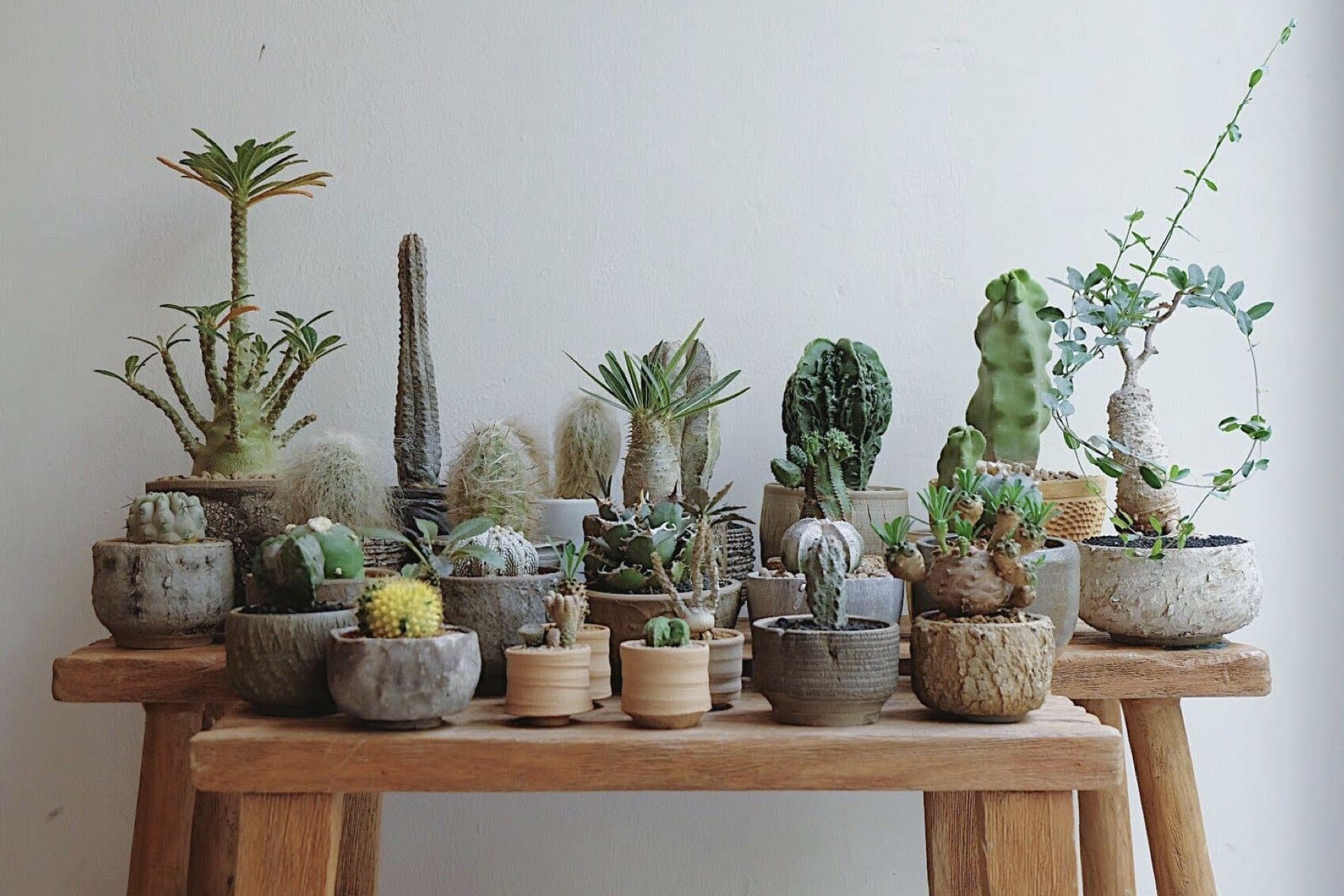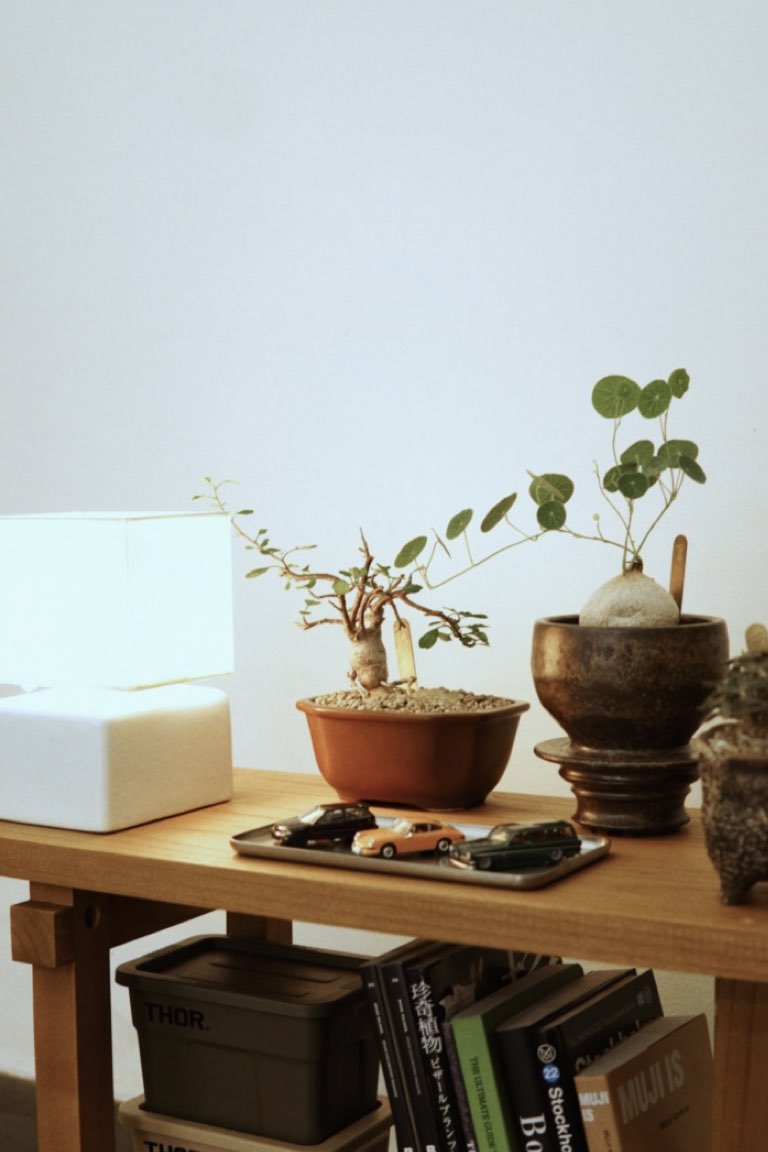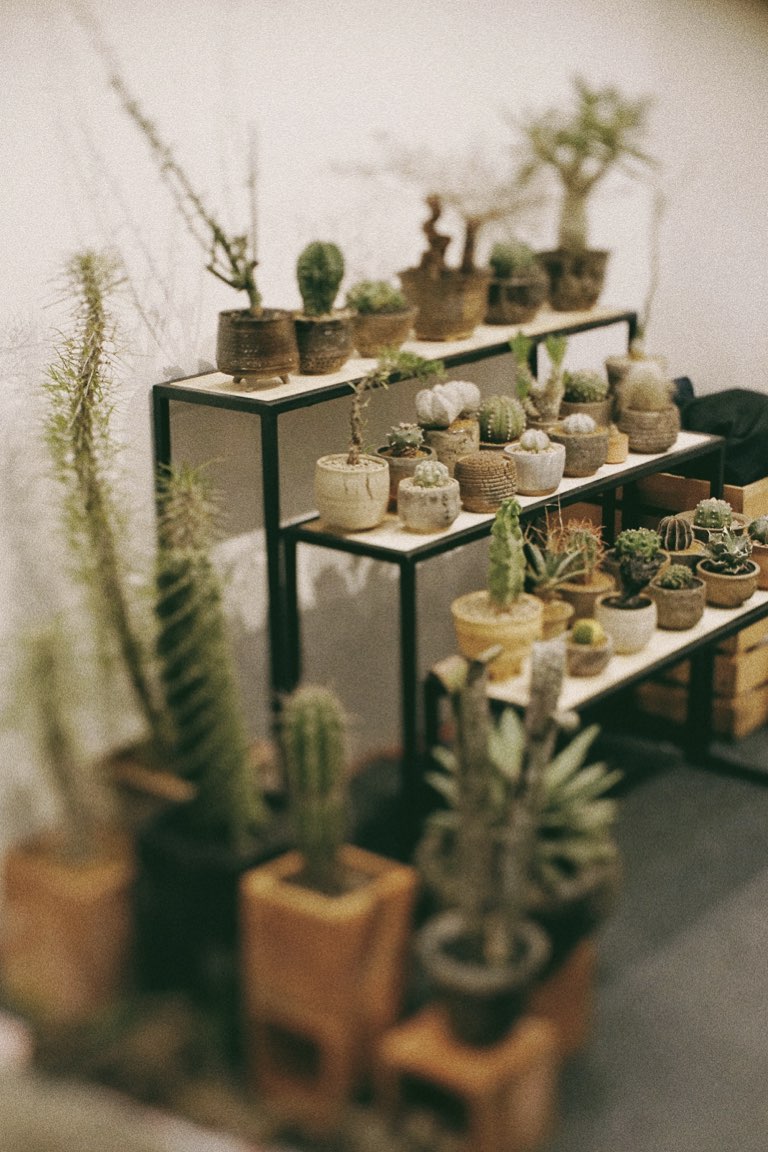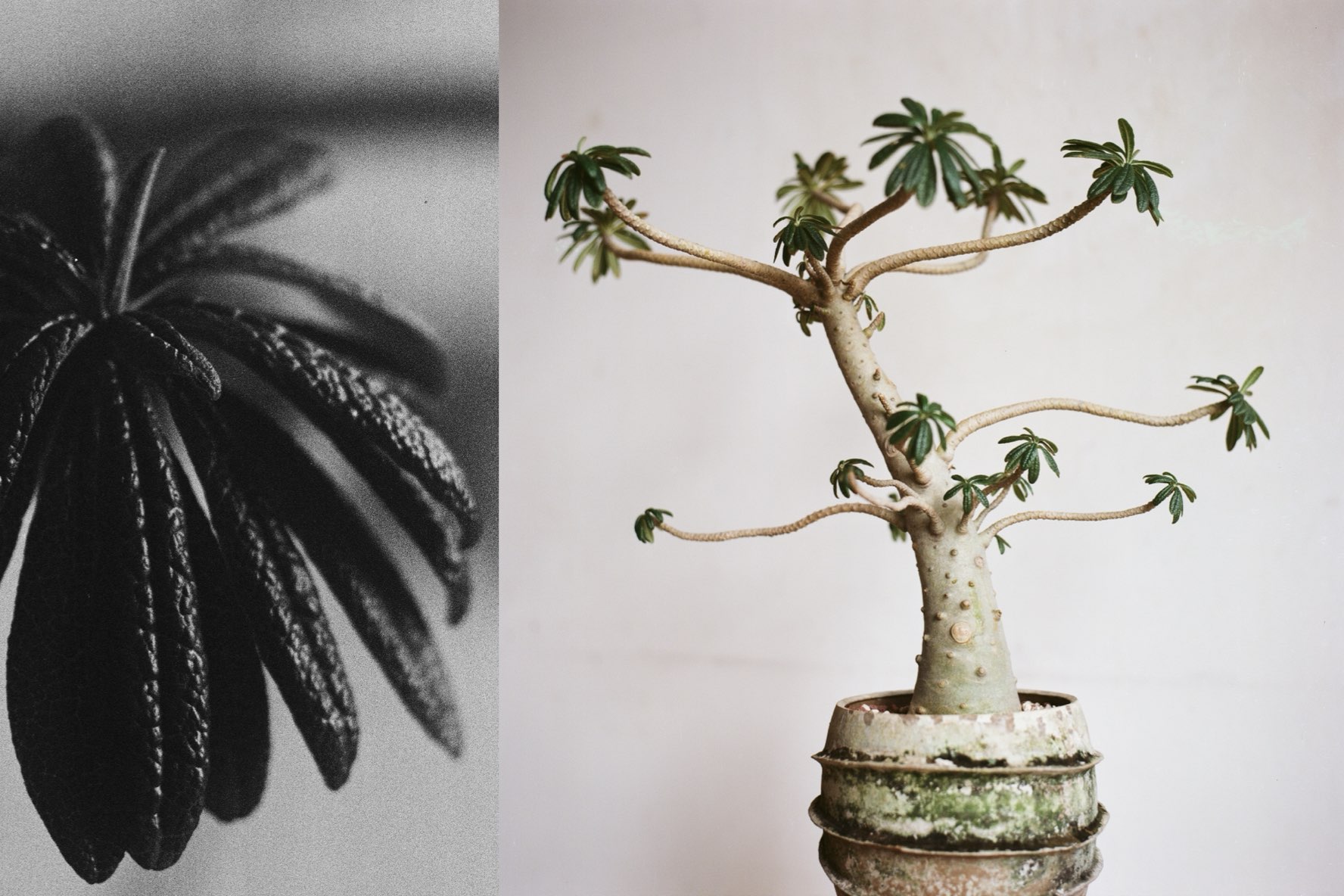Words by Dina. Photographs by David and Taman Hayat.
One of the beautiful privileges of living is having our own unique characteristics and the freedom to express ourselves in different ways. We’ve been exploring the art of Bonsai, which we find to be a fascinating form of expression. Recently we read a book called Pachyforms: Bonsai Succulents Volume II written by Philippe de Vosjoli and Rudy Lime. This is an ongoing exploration and we’ll delve into the world of Bonsai with Magnifica Plants, and surely, we’ll share more of our insights with you bi-weekly!

–
In this new series from Taman Hayat, we explore bonsai not just as a horticultural practice, but as a form of artistic expression. First, we will share some guides for beginners through the essentials, from the advantages of bonsai to tips on selecting and shaping plants.
History and origins
In Japanese, ‘bon’ means tray, pot or container. ‘Sai’ means to plant. So ‘bonsai’ literally means “planted in a tray”. The practice of dwarfing trees and plants is believed to have originated in China more than 1600 years ago, where it had a different aesthetic from what we see in traditional Japanese bonsai. Chinese bonsai often features extreme stylization, sometimes appearing almost surrealistic. In contrast, Japanese bonsai tends to be more naturalistic, focusing on a balanced distribution of trunks, branches, and foliage.
The art of bonsai has long been associated with miniature, dwarf-like plants, but its roots in Japanese tradition tell a broader story. Bonsai is about carefully training and sculpting plants to create living works of art.
Ideal bonsai for beginners
If you’re new to bonsai, using succulents has some big benefits compared to the typical bonsai trees from tropical species. The main advantage is that succulents can handle a bit of neglect. Traditional bonsai trees need a lot of care, and if you forget to water them, they could end up in the trash. Though succulents have become more popular in bonsai, many say succulents don’t fit traditional bonsai principles and aesthetics. However, some enthusiasts appreciate the flexibility and unique traits of succulents, using them to create modern bonsai styles.
To understand the differences between bonsai succulents and traditional bonsai, let’s consider what makes a plant a good candidate for bonsai art. Typically, bonsai plants have a broad base and a trunk that tapers as it rises. Traditional bonsai aim to create small-scale versions of mature trees. However, many succulents used in bonsai tend to have thick bodies. These succulents don’t necessarily conform to the usual proportions of traditional bonsai, resulting in a different aesthetic that creates dwarf-like plants with compact forms.


–
Top species and specimens to consider
To make bonsai succulents, you can start from seeds or small plants or buy nursery-grown specimens that are already a good size for bonsai. If your nursery-grown plants come without roots, you must re-root them in well-drained soil and let them grow for at least a year before training them as bonsai.
If you’re starting with small plants, keep in mind that growing them to a larger size requires different methods than growing a plant as a bonsai. If you put a small plant in the proper size bonsai pot for display, it tends to remain small and may not grow into the desired size, shape, or appearance that is typically associated with a bonsai succulent. That’s why it’s better to either buy larger plants with the right shape or let smaller plants grow bigger into specimens before you start training them as bonsai.
Plants that already have some size and unique character tend to be several years old and are usually more expensive than starter plants. However, considering the time (several years) and effort (hours spent watering, feeding, and caring for the plants) required to grow succulents to a large size, the price of larger plants often seems like a good deal. So, even though they cost more, buying them might be worth saving up.
Most hobbyists do a little of both: grow small plants with the goal of eventually having large display specimens and occasionally purchase select older plants. This allows them to practice the art of succulent bonsai while steadily building a specimen collection they can enjoy now rather than having to wait several years.

–
What should you look for when choosing plants to train as bonsai?
The key aesthetic features to consider are the thickness and shape of the plant’s trunk or body. For pachyform succulents, the most prominent feature is the caudex or trunk, and a certain level of thickness is necessary for a plant to be a good bonsai candidate. Next, check the branching pattern to see if it has the potential for a balanced or symmetrical shape. As a reference, we help you find a list of the most commonly suitable plants for bonsai succulents. And, of course, there is a long list of plants you can find out there.
Pachycaul tree forms:
Adansonia, Adenia, Adenium, Beaucarne, Bursera, Boswellia, Ceiba, Commiphora, Delonix, Ficus, Jatropha, Maringa, Operculicarya, Pachycornus, Phyllanthus, Pseudobombax, Sterculia
Vining globs:
Adenia, Cephalopentandra, Cihirhiza, Cissus, Ibervillea, Kedrostis, Momordica, Pyrenacantha, Raphionacme, Stephania, Tinospora, Zygosicyos
Pachycaul shrubs and herbs:
Begonia, Crassula, Euphorbia, Pelargonium
Other caudexed or pachycaul succulents:
Pachypodium
Important tip: grow them before you train them
To train a bonsai, it’s crucial to let it grow before you start shaping it. Think of bonsai training as a two-step process: first, you must understand how to grow and keep the plant healthy. Only then can you move on to training and shaping it. From the book, we quote, “If you can’t keep a species alive, then you won’t be able to reproduce it or develop an art associated with it.”
“If you can’t keep a species alive, then you won’t be able to reproduce it or develop an art associated with it.”
These two steps require different approaches. Growing focuses on encouraging the plant to thrive, while bonsai training involves techniques that control its growth to create the desired shape. Knowing the basic needs of a plant species and how it naturally grows is crucial, as this affects its final appearance as a bonsai. Simple things like tilting the plant while it grows or raising it in a coarse substrate with rocks can change its shape. Before you can shape your bonsai, ensure it’s strong and healthy. Remember, the first step is growing your plant, and the second is training it.
In the next article, we will share two more parts related to bonsai. After we explore the art of bonsai, we will explore how to prepare and start making bonsai. This includes not only plants and pots but also everything about care tips–and, most importantly, about living out art through bonsai.